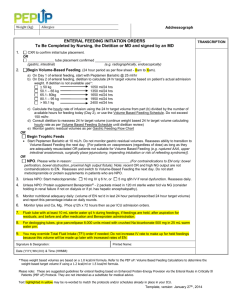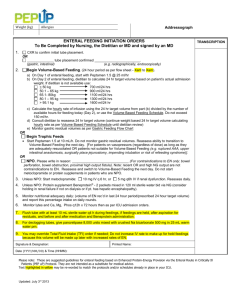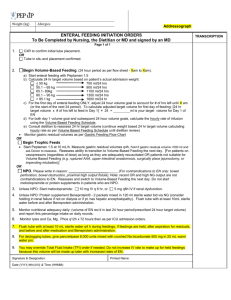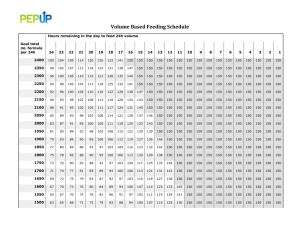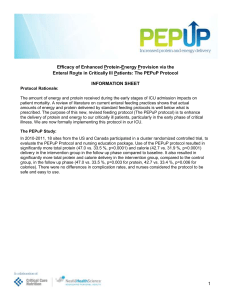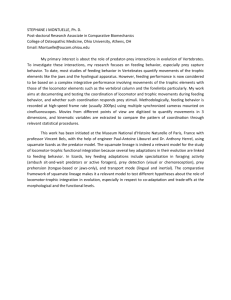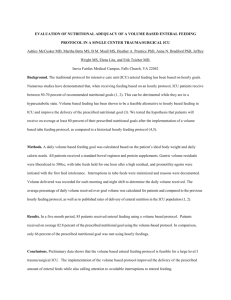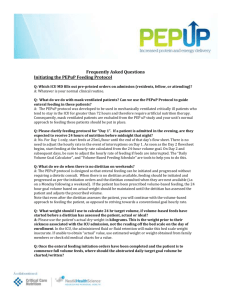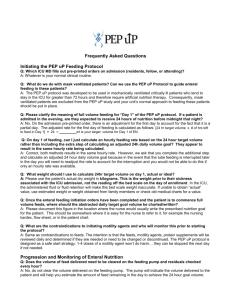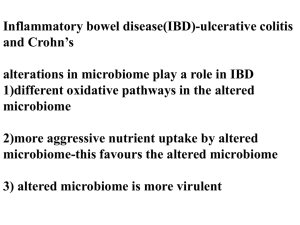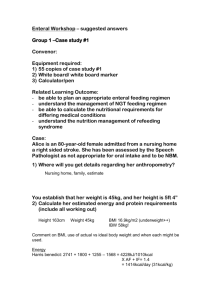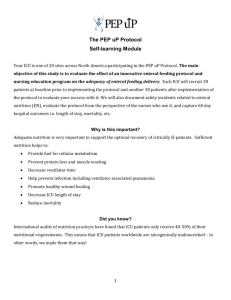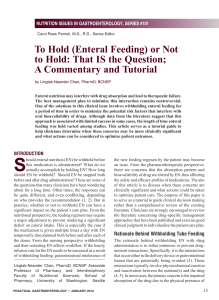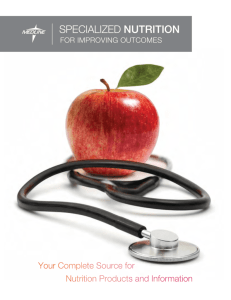PEP uP Early Enteral Nutrition Protocol
advertisement
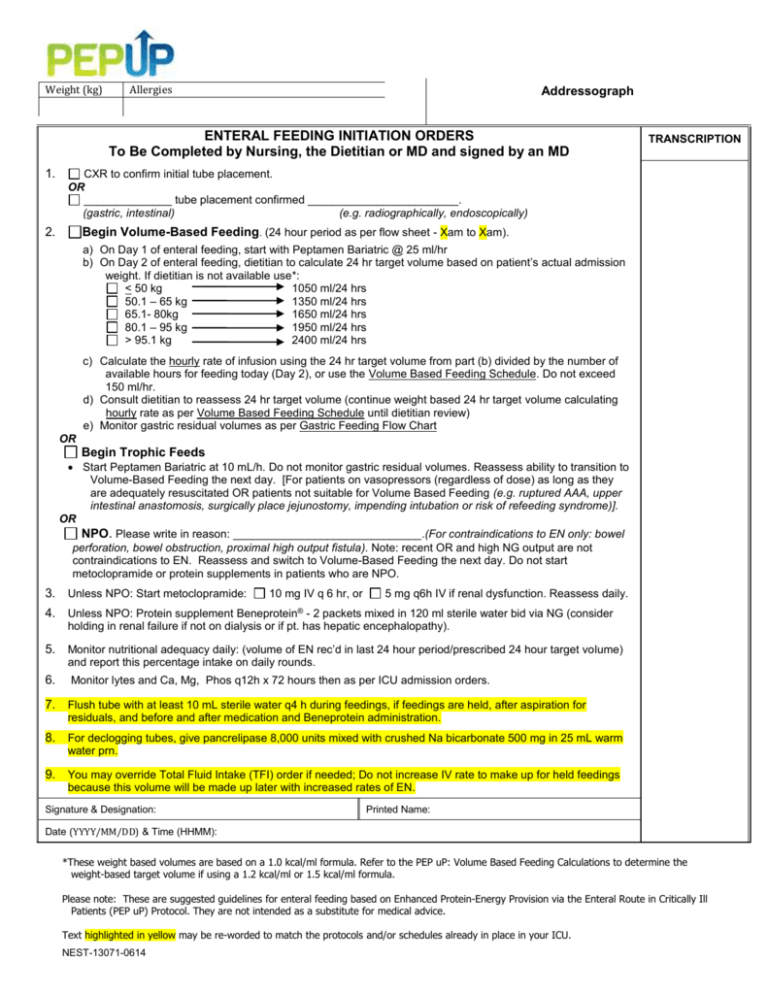
Weight (kg) Allergies Addressograph ENTERAL FEEDING INITIATION ORDERS To Be Completed by Nursing, the Dietitian or MD and signed by an MD 1. CXR to confirm initial tube placement. OR ______________ tube placement confirmed ________________________. (gastric, intestinal) (e.g. radiographically, endoscopically) 2. Begin Volume-Based Feeding. (24 hour period as per flow sheet - Xam to Xam). TRANSCRIPTION a) On Day 1 of enteral feeding, start with Peptamen Bariatric @ 25 ml/hr b) On Day 2 of enteral feeding, dietitian to calculate 24 hr target volume based on patient’s actual admission weight. If dietitian is not available use*: < 50 kg 1050 ml/24 hrs 50.1 – 65 kg 1350 ml/24 hrs 65.1- 80kg 1650 ml/24 hrs 80.1 – 95 kg 1950 ml/24 hrs > 95.1 kg 2400 ml/24 hrs c) Calculate the hourly rate of infusion using the 24 hr target volume from part (b) divided by the number of available hours for feeding today (Day 2), or use the Volume Based Feeding Schedule. Do not exceed 150 ml/hr. d) Consult dietitian to reassess 24 hr target volume (continue weight based 24 hr target volume calculating hourly rate as per Volume Based Feeding Schedule until dietitian review) e) Monitor gastric residual volumes as per Gastric Feeding Flow Chart OR Begin Trophic Feeds Start Peptamen Bariatric at 10 mL/h. Do not monitor gastric residual volumes. Reassess ability to transition to Volume-Based Feeding the next day. [For patients on vasopressors (regardless of dose) as long as they are adequately resuscitated OR patients not suitable for Volume Based Feeding (e.g. ruptured AAA, upper intestinal anastomosis, surgically place jejunostomy, impending intubation or risk of refeeding syndrome)]. OR NPO. Please write in reason: ______________________________.(For contraindications to EN only: bowel perforation, bowel obstruction, proximal high output fistula). Note: recent OR and high NG output are not contraindications to EN. Reassess and switch to Volume-Based Feeding the next day. Do not start metoclopramide or protein supplements in patients who are NPO. 3. Unless NPO: Start metoclopramide: 4. Unless NPO: Protein supplement 10 mg IV q 6 hr, or 5 mg q6h IV if renal dysfunction. Reassess daily. Beneprotein® - 2 packets mixed in 120 ml sterile water bid via NG (consider holding in renal failure if not on dialysis or if pt. has hepatic encephalopathy). 5. Monitor nutritional adequacy daily: (volume of EN rec’d in last 24 hour period/prescribed 24 hour target volume) and report this percentage intake on daily rounds. 6. Monitor lytes and Ca, Mg, Phos q12h x 72 hours then as per ICU admission orders. 7. Flush tube with at least 10 mL sterile water q4 h during feedings, if feedings are held, after aspiration for residuals, and before and after medication and Beneprotein administration. 8. For declogging tubes, give pancrelipase 8,000 units mixed with crushed Na bicarbonate 500 mg in 25 mL warm water prn. 9. You may override Total Fluid Intake (TFI) order if needed; Do not increase IV rate to make up for held feedings because this volume will be made up later with increased rates of EN. Signature & Designation: Printed Name: Date (YYYY/MM/DD) & Time (HHMM): *These weight based volumes are based on a 1.0 kcal/ml formula. Refer to the PEP uP: Volume Based Feeding Calculations to determine the weight-based target volume if using a 1.2 kcal/ml or 1.5 kcal/ml formula. Please note: These are suggested guidelines for enteral feeding based on Enhanced Protein-Energy Provision via the Enteral Route in Critically Ill Patients (PEP uP) Protocol. They are not intended as a substitute for medical advice. Text highlighted in yellow may be re-worded to match the protocols and/or schedules already in place in your ICU. NEST-13071-0614
